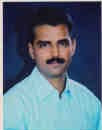Module wise most expected questions on
"Unix and Shell Programming"
"Unix and Shell Programming"
Module-1
1. Explain in brief about "UNIX Architecture" with neat diagram.2. List and explain 3 working UNIX environment.
3. Explain the following UNIX commands with minimum 2 examples.
1. echo 2. calc 3. man 4. who 5. clear
4. What are internal and external commands? list and explain with examples.
5. Write short note on super user.
6. What are file attributes? Explain two ways to change the file permissions with example.
Module-2
1. What is file in UNIX? Discuss the types of files supported by Unix.2. Explain: absolute and relative path names.
3. Explain Directory handling commands supported by Unix. (pwd, mkdir, cd, rmdir)
4. Explain File handling commands (cat, rm, cp, mv, wc, od_
5. What is ls command? Explain with all options and examples.
6. Explain Directory permissions.
Module-3
1. Explain 3 modes of vi editor with a neat diagram.2. Explain Navigation commands used while working with vi editor.
3. Discuss the following commands.
set, amp and abbr commands.
4. Discuss the the Shell's Interpretive Cycle.
5. What are grep and egrep commands? Explain with examples.
5. Explain the following commands.
pipe and tee
6. Explain the Three Standard Files used for Redirection.
7. Discuss pattern matching with wild-cards
Module-4
1. What is shell script? Write a shell script to read pattern and file name to search from given input file using grep command.2. Explain the conditional statements supported by UNIX with syntax and examples.
3. Explain case statement supported by UNIX with general format and example.
4. Explain the while and until loop statements supported by UNIX with syntax and examples.
5. Explain sort utility supported by UNIX with options & examples.
6. What are file links? explain hard and soft links.
7. Explain Escaping and Quoting with examples.
8. Practice Shell Programs from Sumitabha Das authour text book.
Module-5
1. What is process in UNIX? Explain parent-child processes with example.2. Discuss ps command with different options supported by UNIX.
3. What are cron and crontab files? Discuss.
4. What are nice and nohup commands? Discuss.
5. Explain bg and fg commands.
6. What is PERL programming? Discuss its importance.
7. Explain structure of Perl Script.
8. Discuss string handling functions supported by Perl Scripts.
9. Explain default variables $. & $_
10. Explain list and arrays supported by Perl.
11. Discuss splice and join commands.
Dear student,
Good luck for the forthcoming Annual Examination.
To score good marks, you need to follow the following tips.
1. You need to write correct answer for the asked question instead of writing unnecessary things for example for the question What is your name? You need to write the following answers.
My name is John, or My full name is John K. Henry or Introduce more about you.But, do not write like My name is ____ (name is missing)
2. First, you need to increase quality, then quantity of quality.
3. Minimum one page answer for any of the question.
4. If, question carry 5 marks then minimum 2 pages with 2 examples.
5. If, question carry 10 marks, then minimum front/back 4 pages with examples.
6. Wherever necessary, draw figure with figure and labels.
First explain the topic.....Then write Syntax......Then write Examples.....List OPTIONS if any in Table with explanation.....Give few examples for few options......
7. Write minimum 3 examples for each UNIX command. If you do not write examples, then you loose marks.
8. Practice Shell and Perl programs from the text book of Sumitabha Das author.
9. Yes, you are intelligent, go ahead, reach your goal, "your future is bright do not spoil it" said by V.T.U.
10. Whatever you write, write neatly with correct question number.
11. Do no compare yourselves with others! instead compare yourself with your last performance!.
12. Move the examination hall with Hall Ticket, ID card, Blank ink ball pen and compass box.
13. Write your V.T.U. no. correctly on answer booklet.
14. Yours sign and supervisor sign is must on answer booklet.
In your free time, kindly fill the Feedback Form......
Good Luck!
Yours Teacher
Mr. C. S. Kusur
Asst. Prof. Dept. of CSE
BLDEA's V. P. Dr. P. G. H. College of Engineering and Technology, Vijayapur.
cs.kusur@gmail.com
9739762682






